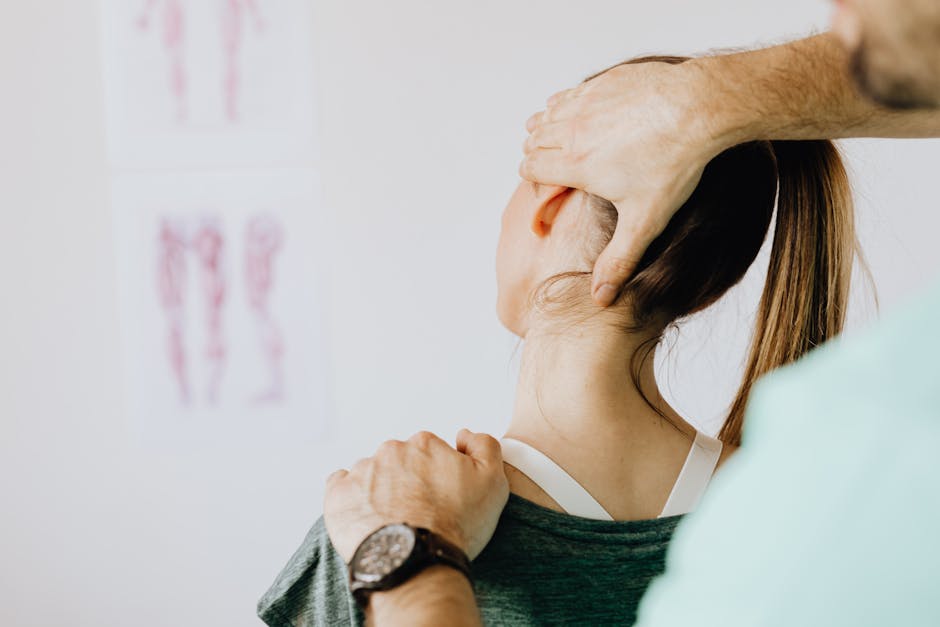Understanding Biomechanical Assessments
Biomechanical assessments are crucial for creating personalized treatment plans after an auto injury. These assessments analyze the body’s movements to identify any impairments or dysfunctions. By understanding how the body moves, healthcare providers can develop targeted therapies to aid in recovery. Biomechanical assessments help determine the root causes of pain and dysfunction, allowing for tailored treatment that addresses specific needs.
Importance of Biomechanical Assessments in Auto Injury Recovery
Biomechanical assessments play a crucial role in auto injury recovery. They help healthcare providers understand the forces that acted on your body during the accident, which can pinpoint underlying issues that may not be immediately evident. By analyzing how your body moves and functions, these assessments provide valuable insights for creating personalized treatment plans tailored to your specific needs. Injury recovery is not a one-size-fits-all process, and biomechanical assessments ensure that your treatment is targeted and effective, speeding up your recovery process.
How Biomechanical Assessments Enhance Treatment Plans
Biomechanical assessments help create more personalized treatment plans by analyzing how your body moves and functions, pinpointing the root cause of your injuries. This detailed evaluation allows healthcare providers to tailor treatments specifically to your needs, optimizing your recovery process. By incorporating biomechanical assessments, healthcare professionals can offer more targeted and effective therapies, speeding up your healing journey.
Benefits of Incorporating Biomechanical Assessments
Biomechanical assessments help pinpoint the exact source of injury, ensuring personalized treatment plans for quicker recovery. Here are the benefits:
- Accurate Diagnosis: These assessments provide detailed insights into how the body moves, identifying specific areas affected by the injury.
- Tailored Treatment: By understanding the biomechanics, treatment plans are customized to address individual needs, enhancing the recovery process.
- Prevent Future Complications: Addressing biomechanical issues can prevent long-term complications or recurring injuries, promoting overall wellness.
Conducting a Biomechanical Assessment
A biomechanical assessment is a detailed examination of how your body moves and functions after an auto injury. During this assessment, a trained specialist analyzes your movement patterns, muscle strength, flexibility, and joint mobility to understand the impact of the injury on your body. The assessment helps create personalized treatment plans tailored to your specific needs, ensuring a more effective and efficient recovery process.
Key Components of a Biomechanical Assessment
A biomechanical assessment includes an evaluation of the individual’s range of motion, posture, muscle strength, and movement patterns. It also considers any injuries or issues that may affect how the body moves. This assessment aims to identify the underlying causes of pain or dysfunction to create a personalized treatment plan for optimal recovery.
Role of Technology in Biomechanical Assessments
Technology plays a crucial role in biomechanical assessments for auto injury recovery. Advanced tools and software are utilized to analyze movement patterns, forces acting on the body, and potential areas of injury. Here’s how technology enhances the assessment process:
- 3D Motion Analysis: Helps in determining the body’s movements and any abnormalities that may contribute to injury.
- Force Plate Analysis: Measures the forces exerted during various activities, aiding in understanding the impact on the body.
- Pressure Mapping: Identifies areas of high pressure on the body, indicating potential areas of discomfort or injury.
- Computer Simulation: Allows for virtual testing of different treatment scenarios to find the most effective recovery plan.
Technology enables healthcare professionals to create personalized and efficient treatment plans based on accurate biomechanical data, ultimately enhancing the recovery process for auto injuries.
Interpreting Results and Creating Tailored Treatment Plans
When interpreting the results of biomechanical assessments, healthcare providers can pinpoint the specific areas affected by auto injuries. This detailed analysis helps them create tailored treatment plans that address the individual needs of each patient. By customizing treatments based on these assessments, healthcare providers can optimize recovery outcomes and improve the overall quality of care for auto injury patients.
Follow-Up and Monitoring Progress
After your initial biomechanical assessment, regular follow-up appointments are crucial to monitor your progress. These follow-up sessions help your healthcare provider track your recovery and make any necessary adjustments to your treatment plan. By staying committed to these appointments, you ensure that your auto injury recovery stays on track and any issues are addressed promptly. Keep in mind that consistent monitoring is key to maximizing the effectiveness of your treatment plan.
Conclusion: Transforming Auto Injury Recovery through Biomechanical Assessments
Biomechanical assessments play a crucial role in designing personalized treatment plans for auto injury recovery. By analyzing the body’s movement patterns and identifying any imbalances or weaknesses, healthcare providers can develop targeted strategies to improve recovery outcomes. These assessments offer a comprehensive understanding of the impact of the injury on the body, enabling practitioners to tailor therapies that address specific needs and promote effective healing. This holistic approach transforms the way auto injuries are treated, leading to more efficient and successful recovery journeys for patients.
Exercises You Can Do at Home after a Visit to the Chiropractic Clinic
Stay active at home with exercises from ‘Exercises You Can Do at Home after a Visit to the Chiropractic Clinic’.
Read MoreAthletic Therapy: A Vital Component in Sports Rehabilitation
Discover the importance of athletic therapy in sports rehabilitation in our insightful blog on ‘Athletic Therapy: A Vital Component in Sports Rehabilitation’.
Read MoreA Comprehensive Guide to Spinal Therapy for Athletes
Discover the benefits of spinal therapy for athletes in our comprehensive guide ‘A Comprehensive Guide to Spinal Therapy for Athletes’.
Read MoreHow Chiropractic Techniques are Advancing in Pain and Injury Treatment
Discover the latest advancements in pain and injury treatment through innovative chiropractic techniques.
Read MoreSpine Rehabilitation: How Corrective Exercises Can Help with Posture and Pain Relief
Discover how corrective exercises in spine rehabilitation relieve pain and improve posture – read more now!
Read MoreCorrective Exercises: Your Secret Weapon Against Chronic Pain
Combat chronic pain with corrective exercises featured in ‘Corrective Exercises: Your Secret Weapon Against Chronic Pain’.
Read More





